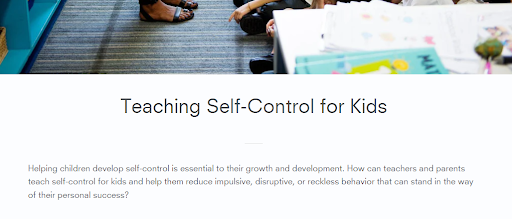
How to Build Intrinsic Motivation in Students: 3 Key Insights
Students typically receive praise for scoring high marks on assignments and assessments; this framework tends to place extensive value on innate intellectual ability. However, this rewards system fails to acknowledge the immense and equally powerful weight that having drive affords children in the classroom and well beyond.
The ability to be self-motivated allows students not to rely on external sources of validation in order to strive for stellar academic performance. When students try to do well in school for their own benefit, it builds confidence and a self-starter attitude. It dissolves a reliance on a need for external reassurance from educators and parents that will extend well beyond their years in conventional educational settings.
Intrinsic motivation is an equal, if not a more significant, indicator of success in school, careers, relationships, etc. than instinctive intelligence. With a true drive to learn and grow, students can tackle any challenge put in front of them, academic or otherwise. By focusing on developing key character traits in children and thus boosting their awareness of their own significance, educators embed intrinsic motivation in the classroom, giving students the capacity to stimulate their own learning.
However, as powerful as the connection between intrinsic motivation and student performance may be, instilling this sense of inner drive is infinitely more challenging than simply falling back on the carrot-or-stick method so often encouraged in education.
To help educators influence and teach in a manner that produces well-rounded, motivated students who want to learn for the sake of learning, we’ve compiled some of the best approaches to fostering intrinsic motivation in developing children.
Encourage Students to Be Responsible
The key to motivation in the classroom is teaching students to adopt a sense of responsibility for themselves, loved ones, and peers. Doing well in school is one way to gain a parent’s or educator’s trust, and children learn that with trust comes independence. Establishing a sense of pride in responsibility is self-reinforcing for children and encourages an inner drive to do well in school, independent of grades and feedback they may receive.
More often than not, this enhanced intrinsic motivation for students to do their best also leads to far greater academic achievement and dedication than simply offering rewards in exchange for good grades.
Encourage Acts of Service

Engaging students in acts of service for others illustrates how doing a kindness for someone else can elevate a sense of self-esteem and purpose. When students recognize the positive effects of treating others well, this cements the importance of responsibility toward those counting on them. Teaching students the value of acts of service is an effective way to incorporate intrinsic motivation examples in the classroom. It fosters an intention to do good, not only for themselves but the world around them, reciprocally strengthening their sense of responsibility to excel academically.
Encourage Self-Control

For students to attain self-driven and sustained motivation in education, they must recognize that their ability to progress is within the bounds of their own control. When students realize the agency they hold over their behavior in school, this, in turn, grants them a sense of autonomy over their lives. Teaching children self-control equips them with the tools to direct their future. Students recognize the autonomous power within their grasp with the realization that they can and will succeed if they are able to control their own emotions and motivations.
Encourage Autonomy
Like personal responsibility, allowing children to make their own decisions and learn in an autonomous environment increases their intrinsic motivation, confidence, and sense of self-worth. Examples of ways to encourage autonomy in the classroom include listening to students, taking their opinions and viewpoints seriously, allocating time for them to work independently, and giving them the freedom of choice regarding how they approach a task or assignment in class.
Another method is to ask students what they are curious about or interested in when approaching a new subject, and allowing them to learn or explore these interests throughout the time spent on the topic.
Autonomy can also be encouraged by avoiding behaviors or teaching methods that seek to control motivation, such as offering too little time for students to work on problems independently, giving them the answer without letting them try to solve the problem themselves, and using questions that aim to direct and control their answers and conversation without letting them answer according to their own beliefs or understanding.
Responsibility, acts of service, and self-control are just a handful of character strengths that allow students to develop the independence and emotional intelligence they need to be self-driven in an academic setting. By focusing on developing these abilities to lift themselves and others up around them, a sense of purpose is embedded in them that successfully motivates students to learn while acknowledging the value of determination and perseverance.
When choosing motivational strategies in the classroom, promoting these intrinsic character traits in developing children ignites the spark to achieve academic success and lays the foundation for cultivating multi-dimensional, emotionally aware human beings.






Add a comment